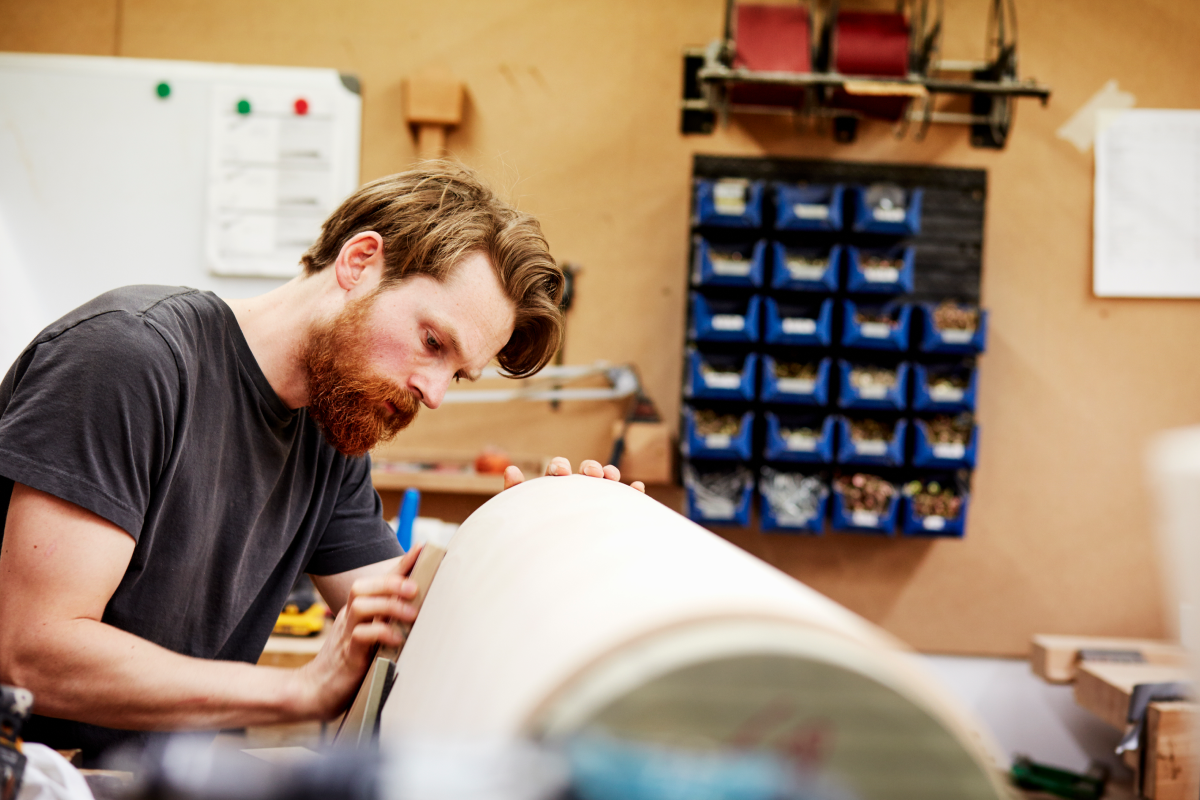
Curved Design in Interior Furniture: Timeless Elegance and Contemporary Appeal
17 July 2023
Curved design has an enduring allure that has fascinated designers throughout history, going beyond mere functionality and aesthetics in interior furnishings. The incorporation of curves adds a captivating visual appeal, infusing spaces with intrigue and a harmonious flow. Moreover, curved furniture has the ability to transform the spatial dynamics of an environment, introducing fluidity and softness into a world often dominated by rigid, linear forms. While curves are sometimes associated with a vintage look, contemporary curvilinear furniture presents a fresh and modern approach, combining softness, comfort, and simplicity.
This particular design style has been embraced by various practitioners and movements. From the organic modernism of Alvar Aalto to the iconic creations of Charles and Ray Eames and Eero Saarinen, curved furniture has left an indelible mark on the world of design. In addition to individual designers, certain design movements have also embraced curved forms. For instance, the Art Nouveau movement of the late 19th and early 20th centuries celebrated organic, flowing lines in both architecture and furniture design. The works of renowned architect and designer Antoni Gaudí exemplify this style with his use of curved lines and organic motifs in structures.
The allure of curved designs continues to thrive as contemporary designers masterfully integrate curves into their creations. Subtle integration of curves adds a touch of elegance and fluidity to furniture pieces, whether it’s a sofa that encourages conversation, a dining table with a gentle curvature that facilitates interaction, or an armchair that envelops the body. Curved design elevates the interior furnishing experience, providing comfort and connection.
Anthony Guerrée: Innovation and Craftsmanship
Educated in Paris, Guerrée developed a unique style influenced by the craftsmanship and interior designers of the 1930s. His creations skillfully blend tradition and innovation, showcasing his ability to juxtapose materials and shapes.
Sebastian Herkner: Creativity and Detail-Oriented Approach
Sebastian Herkner, a graduate of the Offenbach Design Academy, is known for his creativity and attention to detail. His approach combines a love for traditional art with an affinity for new technologies, resulting in refined forms and tactile surfaces.
Jan te Lintelo: Timelessness and Resiliency
Jan te Lintelo, with a background in furniture manufacturing, brings a focus on timelessness and resilience to his designs. He seeks the perfect combination of generous proportions, comfort, and style.
Yabu Pushelberg: Meticulous and Collaborative Design
The partnership of George Yabu and Glenn Pushelberg has led to meticulous and collaborative design projects. Their works exhibit attention to detail and timeless appeal, transcending fleeting trends.
Sjoerd Vroonland: Material and Poetic Fusion
Sjoerd Vroonland combines classic designs with familiar materials and techniques, creating innovative products. Inspired by timeless designs, he showcases the beauty of structure and construction through his work.
The evolution of curved design in interior furnishings showcases its enduring appeal and relevance. From the aesthetic benefits of creating visual intrigue and harmony to its functional advantages, curves have proven to be a powerful design element, contributing to the spatial dynamics of a room and promoting comfort and a sense of connection. Contemporary designers continue to explore and embrace curved design principles, pushing boundaries and reimagining the possibilities of this timeless approach.
advertisement

Thank you for signing up!
"*" indicates required fields
advertisement

Curved Design in Interior Furniture: Timeless Elegance and Contemporary Appeal
17 July 2023
Curved design has an enduring allure that has fascinated designers throughout history, going beyond mere functionality and aesthetics in interior furnishings. The incorporation of curves adds a captivating visual appeal, infusing spaces with intrigue and a harmonious flow. Moreover, curved furniture has the ability to transform the spatial dynamics of an environment, introducing fluidity and softness into a world often dominated by rigid, linear forms. While curves are sometimes associated with a vintage look, contemporary curvilinear furniture presents a fresh and modern approach, combining softness, comfort, and simplicity.
This particular design style has been embraced by various practitioners and movements. From the organic modernism of Alvar Aalto to the iconic creations of Charles and Ray Eames and Eero Saarinen, curved furniture has left an indelible mark on the world of design. In addition to individual designers, certain design movements have also embraced curved forms. For instance, the Art Nouveau movement of the late 19th and early 20th centuries celebrated organic, flowing lines in both architecture and furniture design. The works of renowned architect and designer Antoni Gaudí exemplify this style with his use of curved lines and organic motifs in structures.
The allure of curved designs continues to thrive as contemporary designers masterfully integrate curves into their creations. Subtle integration of curves adds a touch of elegance and fluidity to furniture pieces, whether it’s a sofa that encourages conversation, a dining table with a gentle curvature that facilitates interaction, or an armchair that envelops the body. Curved design elevates the interior furnishing experience, providing comfort and connection.
Anthony Guerrée: Innovation and Craftsmanship
Educated in Paris, Guerrée developed a unique style influenced by the craftsmanship and interior designers of the 1930s. His creations skillfully blend tradition and innovation, showcasing his ability to juxtapose materials and shapes.
Sebastian Herkner: Creativity and Detail-Oriented Approach
Sebastian Herkner, a graduate of the Offenbach Design Academy, is known for his creativity and attention to detail. His approach combines a love for traditional art with an affinity for new technologies, resulting in refined forms and tactile surfaces.
Jan te Lintelo: Timelessness and Resiliency
Jan te Lintelo, with a background in furniture manufacturing, brings a focus on timelessness and resilience to his designs. He seeks the perfect combination of generous proportions, comfort, and style.
Yabu Pushelberg: Meticulous and Collaborative Design
The partnership of George Yabu and Glenn Pushelberg has led to meticulous and collaborative design projects. Their works exhibit attention to detail and timeless appeal, transcending fleeting trends.
Sjoerd Vroonland: Material and Poetic Fusion
Sjoerd Vroonland combines classic designs with familiar materials and techniques, creating innovative products. Inspired by timeless designs, he showcases the beauty of structure and construction through his work.
The evolution of curved design in interior furnishings showcases its enduring appeal and relevance. From the aesthetic benefits of creating visual intrigue and harmony to its functional advantages, curves have proven to be a powerful design element, contributing to the spatial dynamics of a room and promoting comfort and a sense of connection. Contemporary designers continue to explore and embrace curved design principles, pushing boundaries and reimagining the possibilities of this timeless approach.
Thank you for signing up!
"*" indicates required fields
advertisement
advertisement